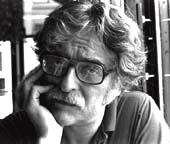When I was 10 years old, the local AP photographer showed me how he developed sheet film in paper developer, printed the negatives wet and dried the prints on thick ferrotype tins positioned over gas burners. Occassionally an airbubble would be trapped between the hot tin and the wet print. The result was that the print exploded. This didn't happen too often. For the most part this was a system that delivered breaking news rather effectively. Later, when a bunch of us showed up in the Middle East in the early '80's, the situation hadn't changed that much. The cameras were smaller and the developer was D-76. But black-and-white images still had to be processed, printed and wirephoted from abroad before the American newspapers got their weather reports and closed up shop for the night. If you were shooting color, the film had to be shipped to the States for development. You'd try to have enough coverage that you could make two different shipments in case one got stopped. (In one case, Dirck Halstead got film from Beirut to New York in time, but it was lost in a freight elevator in the Time and Life Building for several days.) All in all, the worst case scenario was that the pictures in the weekly newsmagazines could be up to a week and a half old when the reader got his copy. Often, the words were relatively fresh, but the photographs were stale. During this war in Iraq, you saw pictures from the day before when you opened your breakfast copy of the New York Times. And the Old Gray Lady was filled with fast-breaking color - lots of photos from staff, from photographers for other papers and from wire and agency photographers. Peter Jennings, the only TV anchor I actually found myself standing next to in a war when I wasn't standing in the lobby of the hotel where the journalists stayed, ended each night's newscast with a series of still pictures. In other words, we should really stop whining about whether digital "is good enough" and be thankful that we are not being hit by shrapnel from the exploding print on a gas-heated ferrotype tin. I can understand photographers' concerns that digital images of importance have less "quality" than film images. I just don't think it's true. First, I'm not sure that the "quality" of journalistic images is in their technical perfection. Photographers who were, a decade ago, hardline Kodachrome junkies, turned to high-speed, 35-mm color negative film even before digital. And I didn't see the "quality" of photojournalism going down the toilet because of it. It did, however, provide a basis for a non-scientific, essentially worthless comparison test with which I could pad this column. I showed a number of people prints of color photographs from a 400 speed, 35-mm color negative and a 6 megapixel digital record - no large format film, no 11 or 13 megapixel files. The prints were 17 and 18 inches in the long dimension, in other words, what you would normally print on 16x20 paper. These could serve as prints in an exhibition, even though the prints from the digital camera would only have 180 dpi, a disgusting no-no in the world of theory. Asked which were "better," everybody picked the images of the pictures they liked - some digital, some film. Becoming specific and asking which pictures were "technically" better was just as inconclusive. My own close up squinting said the film images were more detailed, but that you didn't notice a difference at normal viewing distances. On the other hand, digital had an advantage in its ability to program the camera for your personal preferences in color balance, saturation, "sharpness" and flesh tones. But, neither advantage seemed significant to the viewer. In other words, a basketful of cocker spaniel puppies is going to win the contest whether it's film or digital. Does this mean film is dead? NO, NO, NO!!!!!
Even in the world of small format, there are, for example, qualities,
technical and esthetic, to black-and-white images taken with a somewhat
discrete film camera like a Leica that are totally different from the
digital color images produced by a camera built on an SLR mule (the
basic form, not the quadraped). Let's just hope those pictures are not
being taken with a daily deadline. Of course, digital photography does
have one other incredible, indisputable advantage over film photography
- no print spotting. © Bill Pierce |
|
|
Write a Letter
to the Editor |
